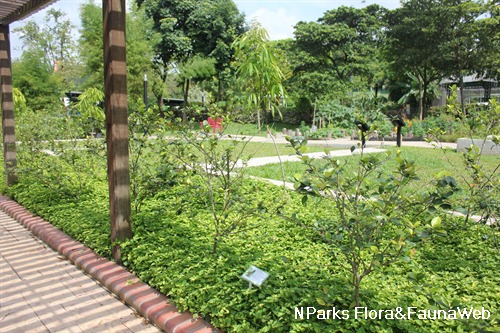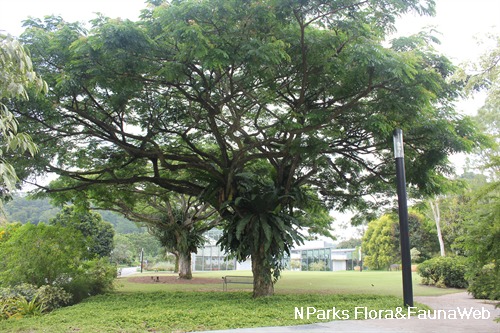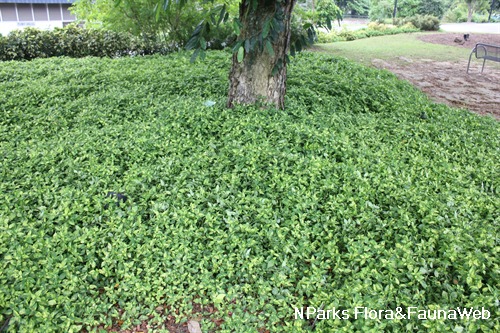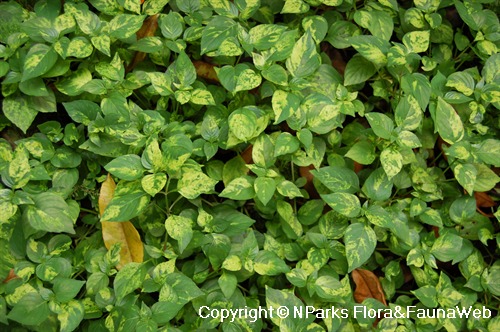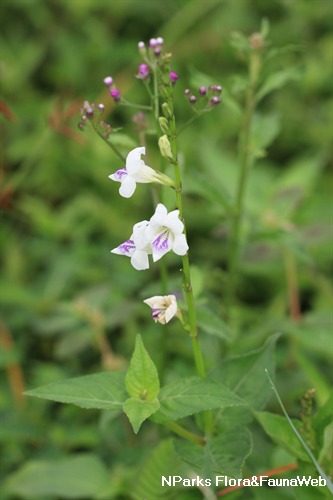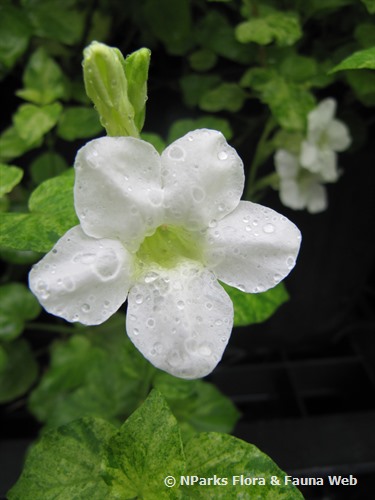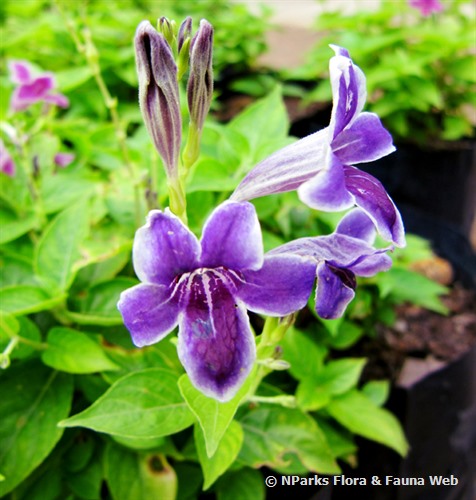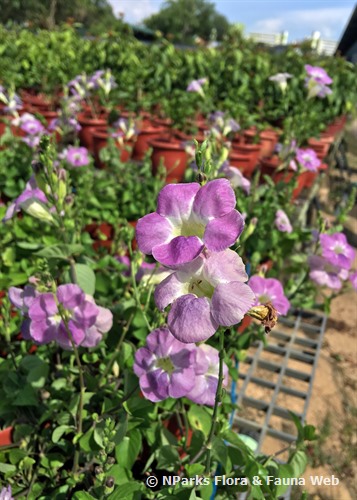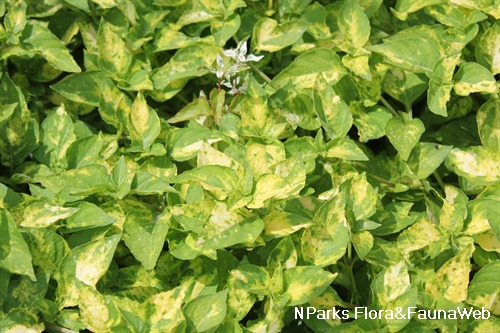
Name
Classifications and Characteristics
| Plant Division | Angiosperms (Flowering Seed Plants) |
|---|---|
| Plant Growth Form | Creeper, Herbaceous Plant |
| Lifespan (in Singapore) | Perennial |
| Mode of Nutrition | Autotrophic |
| Maximum Height | 0.2 m |
Biogeography
| Preferred Climate Zone | Tropical |
|---|---|
| Local Conservation Status | Non-native (Horticultural / Cultivated Only) |
Description and Ethnobotany
| Growth Form | Low-growing creeper up to 15-20 cm tall. |
|---|---|
| Foliage | Green and yellow variegated leaves are ovate (egg-shaped) with pointed leaf tip. Leaf margin is lined with shallow, rounded and indistinct teeth. Overall, the plant is approximately half yellow and half green, but some leaves are more yellow and some more green. The yellow coloration occurs in irregularly shaped patches of various sizes. |
| Cultivation | Once established, this species serves as a low maintenance, drought-tolerant groundcover. It grows well in a wide range of light conditions from full sun to shade. |
Landscaping Features
| Desirable Plant Features | Ornamental Flowers, Ornamental Foliage |
|---|
Plant Care and Propagation
| Light Preference | Semi-Shade, Full Sun, Full Shade |
|---|---|
| Water Preference | Moderate Water |
| Propagation Method | Stem Cutting |
Foliar
| Foliage Retention | Evergreen |
|---|---|
| Mature Foliage Colour(s) | Green, Yellow / Golden |
| Mature Foliage Texture(s) | Raised / Sunken Veins, Thin, Smooth |
| Foliar Type | Simple / Unifoliate |
| Foliar Attachment to Stem | Petiolate |
| Foliar Shape(s) | Non-Palm Foliage (Ovate) |
| Foliar Venation | Pinnate / Net |
| Foliar Apex - Tip | Acute |
| Foliar Base | Rounded / Obtuse |
| Leaf Area Index (LAI) for Green Plot Ratio | 4.5 (Shrub & Groundcover - Dicot) |
Image Repository
Others
| Master ID | 414 |
|---|---|
| Species ID | 1710 |
| Flora Disclaimer | The information in this website has been compiled from reliable sources, such as reference works on medicinal plants. It is not a substitute for medical advice or treatment and NParks does not purport to provide any medical advice. Readers should always consult his/her physician before using or consuming a plant for medicinal purposes. |

